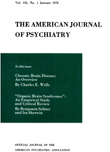GENETIC AND BIOCHEMICAL CORRELATES OF ALCOHOL PREFERENCE IN MICE
Abstract
Certain strains of mice prefer alcohol to water in preference tests whereas others avoid alcohol. This is the behavior which we are trying to explain, and we have formulated several explanatory hypotheses:
1. It was hypothesized that animals of high preference strains metabolize alcohol more quickly than animals of low preference strains. This hypothesis was confirmed.
2. We have asked the question whether there are differences in the activity of liver ADH, the enzyme which catalyzes the rate limiting reaction in alcohol metabolism. We have found that the activity of this enzyme is significantly greater in high than in low preference strains.
3. We have asked whether there are differences in the rate of accumulation of acetaldehyde in high and low preference strains. Tests indicated that significantly greater amounts of blood acetaldehyde accumulate during alcohol metabolism in low than in high preference strains.
4. We have asked whether there are differences in aldehyde dehydrogenase which might account for this differential acetaldehyde accumulation in high and low preference strains. Only an indirect answer is available, but it was found that Antabuse, an inhibitor of aldehyde dehydrogenase, acts differently in high and low preference strains.
5. We have asked whether Antabuse will decrease voluntary consumption of alcohol in normally high or intermediate preference strains. Antabuse was found to decrease voluntary alcohol intake in all strains tested.
6. We have asked whether in mice which show a decrease in alcohol preference with age, liver ADH activity also decreases with time. The answer to this question was affirmative.
7. It was hypothesized that mice which are selectively bred for high and low alcohol preference show a correlated selection response in terms of liver ADH activity. The answer to this question was affirmative; mice selected for high alcohol preference have higher liver ADH activity than mice selected for low alcohol preference.
A number of questions were asked about the metabolism of alcohol in different strains of mice in attempting to discover the underlying biochemical reasons for these differences in alcohol preference behavior. In every case the answers make it appear as if we are heading in the right direction. No one, of course, can say whether these differences which we have described are the real answer to why certain mice drink alcohol and others do not. What can be said, however, is that a good start in that direction has been made.
Access content
To read the fulltext, please use one of the options below to sign in or purchase access.- Personal login
- Institutional Login
- Sign in via OpenAthens
- Register for access
-
Please login/register if you wish to pair your device and check access availability.
Not a subscriber?
PsychiatryOnline subscription options offer access to the DSM-5 library, books, journals, CME, and patient resources. This all-in-one virtual library provides psychiatrists and mental health professionals with key resources for diagnosis, treatment, research, and professional development.
Need more help? PsychiatryOnline Customer Service may be reached by emailing [email protected] or by calling 800-368-5777 (in the U.S.) or 703-907-7322 (outside the U.S.).



